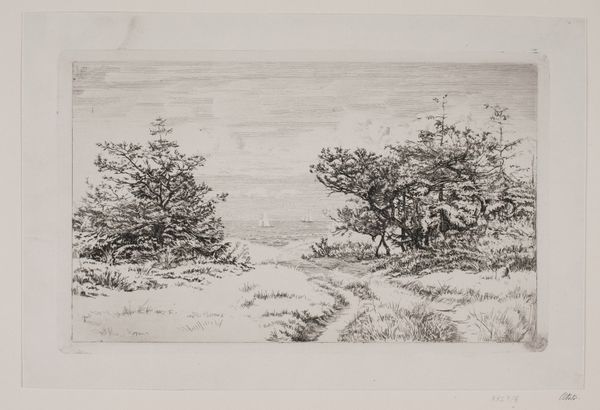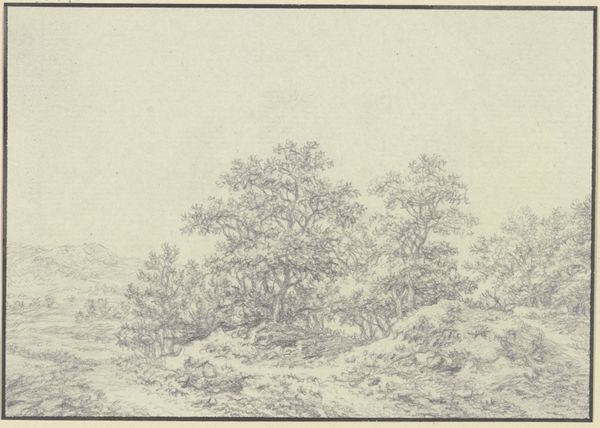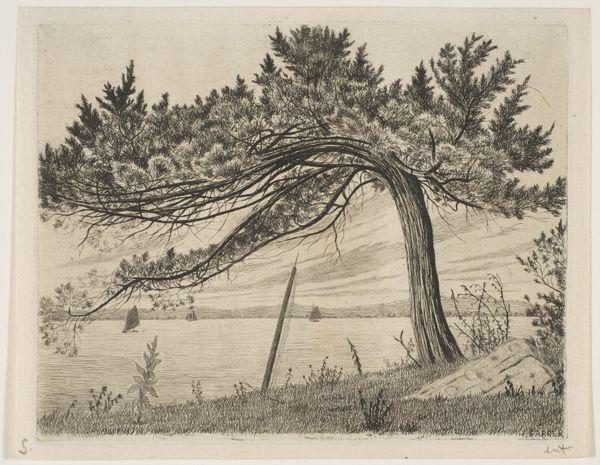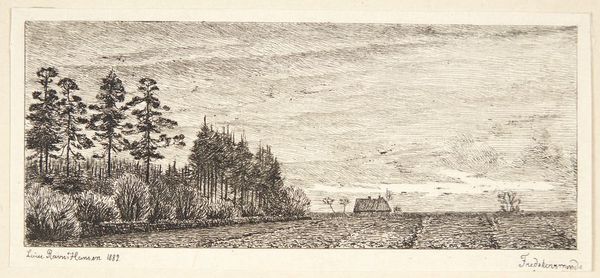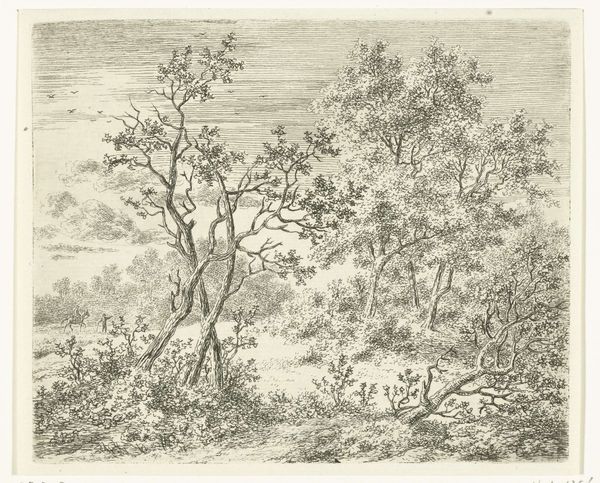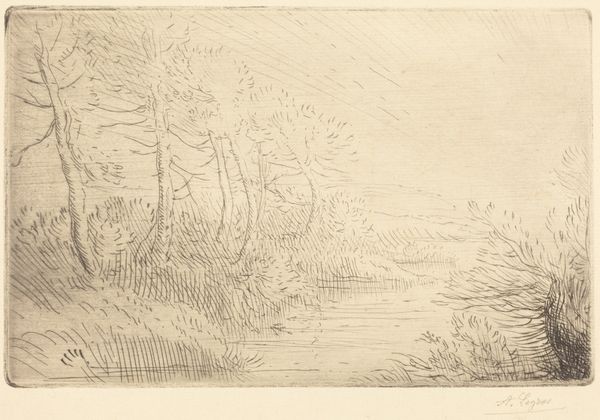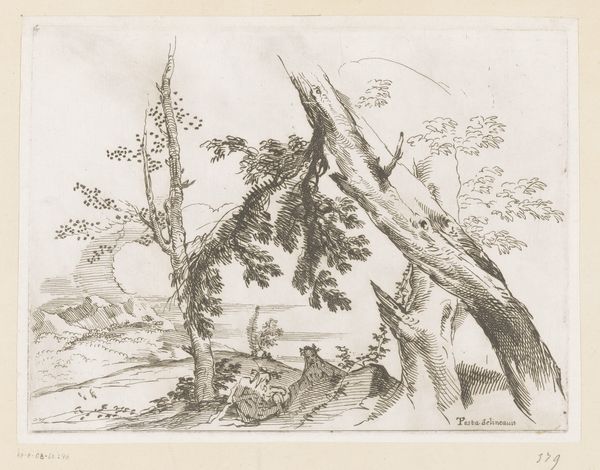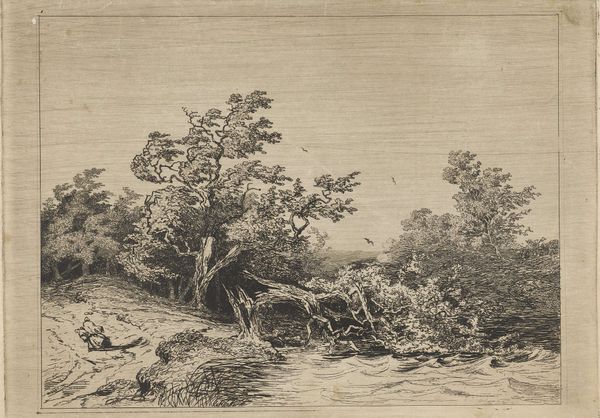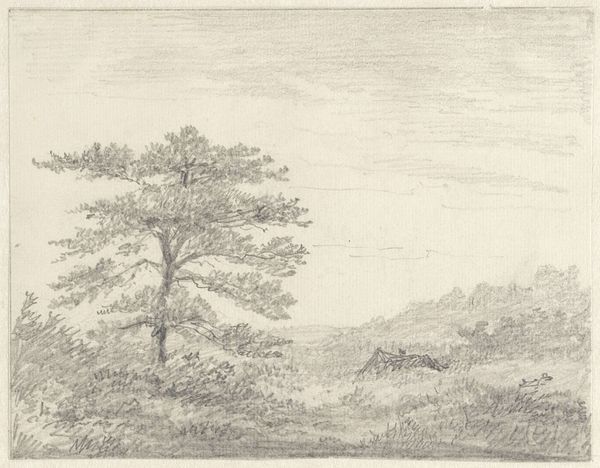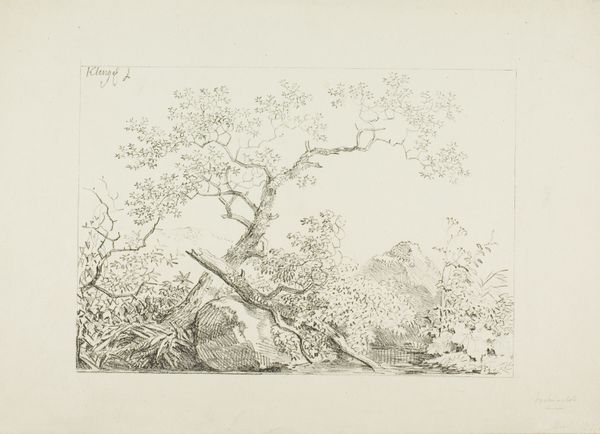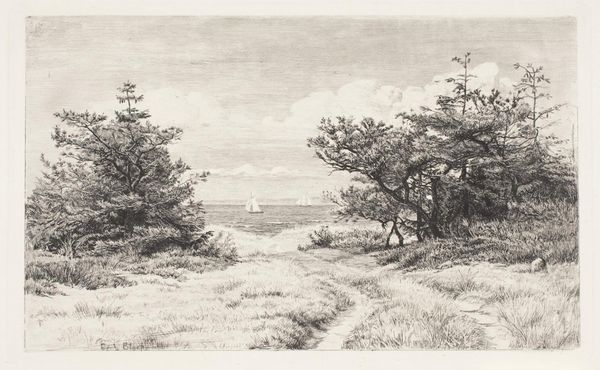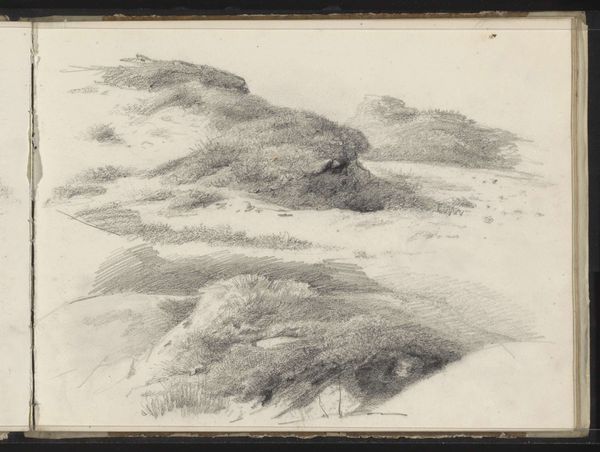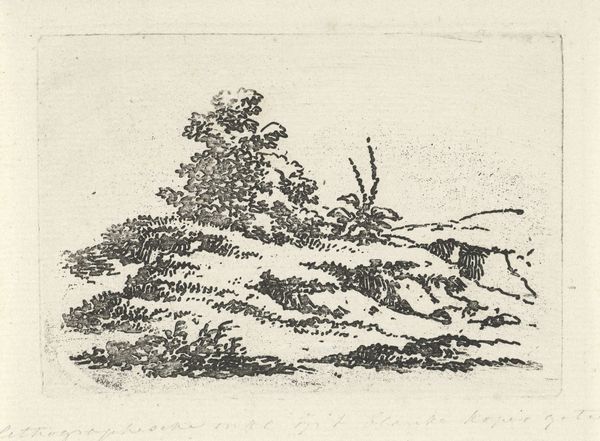
print, etching
# print
#
etching
#
landscape
#
realism
Dimensions: 211 mm (height) x 315 mm (width) (bladmaal), 198 mm (height) x 138 mm (width) (plademaal)
Editor: Carl Bloch's "Udsigt til Havet," or "View to the Sea," created in 1887, is a compelling etching. It’s incredibly detailed despite the limited tonal range. There's a real sense of tranquility in this little slice of nature. What story do you think Bloch is trying to tell here? Curator: It's tempting to see only a picturesque scene, but consider the context. Late 19th century Danish art wrestled with national identity. Realism, while seemingly objective, often served to define what was considered “Danish”. A seemingly innocent seascape like this, showcasing a typically Nordic vista, becomes part of that larger cultural project. Who gets to define "Danishness," and what visual language do they use? Does this perspective shift your reading? Editor: Absolutely! It’s like this etching becomes more than just a pretty picture; it's part of a conversation about national pride and cultural ownership. The quietness of the scene almost emphasizes that, like it's quietly staking a claim. I also noticed some signatures etched onto the print -- what is their significance, and do they affect its cultural or historical value? Curator: Well spotted! The inscriptions can affect the price, but more interestingly, also reveal information about its circulation and reception in the art world. Bloch's image, accessible through prints, reached a broader public and further promoted those cultural values. Think of how inexpensive reproductions democratize art today, albeit at a different speed. Did anything else strike you about this particular viewpoint in contrast with more heroic and awe-inspiring views from, say, the Romantic period? Editor: It's far more intimate and everyday than grand Romantic landscapes. So it connects the idea of 'Danishness' not to monumental nature, but to accessible, relatable experiences. I'd never thought about landscape art working that way. Curator: Exactly. By focusing on familiar, "unremarkable" scenes, artists reinforced a sense of shared identity. Food for thought when you see other landscapes! Editor: Definitely. Thanks for broadening my view, both of the artwork and its deeper implications!
Comments
No comments
Be the first to comment and join the conversation on the ultimate creative platform.
